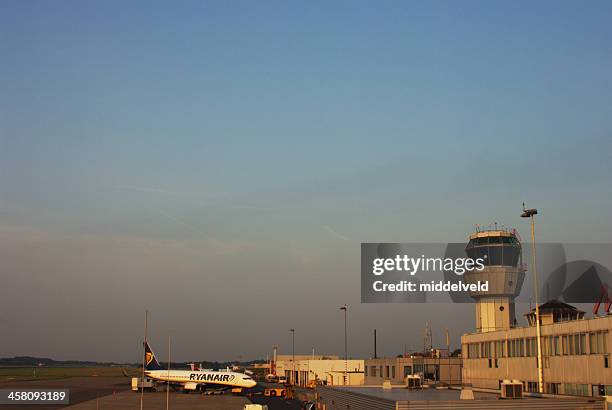Modern Life Reflected: A Global Artworld 1850-1950 (Art Review 2025)

Table of Contents
The Rise of Realism and its Global Variations
Realism, emerging as a dominant force in 19th-century art, aimed to depict the world as it was, rejecting idealized representations favored by academic art. This movement, with its emphasis on portraying everyday life and social realities, profoundly impacted the development of global art.
European Realism
European Realism, spearheaded by artists like Gustave Courbet and Jean-François Millet in France, focused on depicting the lives of ordinary people, laborers, and peasants. Their works often served as social commentary, highlighting the realities of poverty and inequality.
- Key Works: Courbet's "The Stone Breakers" and Millet's "The Gleaners" are prime examples of the movement's focus on social realism and the depiction of working-class life.
- Artistic Techniques: Realist painters emphasized meticulous detail, accurate representation, and a rejection of idealized forms. They often employed techniques like plein air painting to capture the natural light and atmosphere.
- Social Commentary: Realism wasn't just about accurate representation; it was a powerful tool for social critique, challenging the established social order and raising awareness of social injustices.
Realism Beyond Europe
Realism's influence extended far beyond Europe. Variations of the style emerged in different parts of the world, reflecting unique regional characteristics and cultural influences.
- American Realism: Artists like Winslow Homer and Thomas Eakins captured the American landscape and the lives of ordinary Americans, often focusing on themes of labor and the changing American identity.
- Asian Art: While not directly mirroring European Realism, many Asian artists of this period began incorporating aspects of realism into their works, depicting everyday life with increased attention to detail and accuracy.
- African Art: The impact of colonialism significantly influenced the development of art in Africa. Some artists incorporated elements of realism into their works, while others continued to develop existing artistic traditions. The study of colonial art provides valuable insights into the cultural exchange and its impact on artistic expression.
Impressionism and the Dawn of Modernism
Impressionism, a revolutionary movement born in 19th-century France, shattered the conventions of academic painting. Its focus on capturing fleeting moments and the effects of light and color laid the groundwork for modern art.
The Impressionist Revolution
Claude Monet, Pierre-Auguste Renoir, Edgar Degas, and Camille Pissarro are just a few of the pivotal figures who spearheaded the Impressionist revolution. Their rejection of traditional techniques and their emphasis on capturing the subjective experience of light and color marked a profound shift in artistic practice.
- Key Characteristics of Impressionism: Short, broken brushstrokes, vibrant colors, emphasis on light and atmosphere, and depiction of everyday life were hallmarks of Impressionist paintings.
- Rejection of Academic Art: Impressionism actively challenged the established art academies and their rigid rules, paving the way for greater artistic freedom and innovation.
- Influence on Later Movements: Impressionism's impact resonates throughout subsequent art movements, including Post-Impressionism, Fauvism, and Expressionism.
Modernism's Global Spread
Impressionism's influence wasn't confined to Europe. Its innovative techniques and focus on capturing the essence of a moment resonated with artists around the world, leading to diverse regional interpretations and adaptations of the style.
- Global Modernism: Artists in various parts of the world adapted Impressionistic techniques to their own cultural contexts, resulting in a rich tapestry of global modern art. This exchange reflects the growing interconnectedness of the world and the spread of artistic ideas.
- Artistic Innovation: The global spread of Impressionism spurred further artistic innovation, contributing to the development of unique regional styles and enriching the landscape of modern art.
- Cultural Exchange: The adoption and adaptation of Impressionism demonstrated the power of cultural exchange in shaping artistic movements across geographical boundaries.
The Impact of Industrialization and Urbanization on Art
The rapid industrialization and urbanization of the 19th and early 20th centuries profoundly impacted art. Artists increasingly depicted the dramatic changes brought about by these processes, capturing the realities of factory life, sprawling cities, and the challenges of modern society.
Depicting the Industrial Landscape
The rise of factories and industrial centers became a recurring theme in the art of this period. Artists sought to capture the dynamism, and often the harsh realities, of industrial life.
- Examples of Artists: Many artists depicted industrial scenes, often highlighting the social and environmental consequences of rapid industrial growth.
- Artistic Styles: Various artistic styles were employed to represent industrial scenes, from the realism of Gustave Caillebotte’s depictions of Paris to the more expressionistic representations of later movements.
- Social Commentary: Art often served as a powerful tool for social commentary, highlighting the plight of the working class and the environmental consequences of industrialization.
The Rise of the City in Art
The growth of cities became a major source of inspiration for artists. Urban landscapes, filled with energy and teeming with people, presented new opportunities for artistic expression.
- Examples of Urban Scenes: From the bustling streets depicted by Impressionist painters to the more abstract representations of urban life in later movements, the city became a central theme in art.
- Evolution of Cityscapes: The portrayal of cityscapes evolved significantly over this period, reflecting the changing urban landscape and the artists' evolving perspectives.
- Photography's Role: The emergence of photography played a crucial role in capturing the details of urban life, influencing artistic depictions of cities.
Exploring Diverse Artistic Voices: Beyond Europe's Dominance
While European art movements held considerable influence, it's crucial to acknowledge the rich and diverse artistic traditions that existed outside Europe during this period. Many non-European cultures produced remarkable works of art, often reflecting unique cultural values and perspectives.
Non-Western Art and its Global Significance
The artistic output of non-European cultures shouldn't be overlooked in the narrative of Modern Life Reflected. These artworks offer crucial counterpoints to the predominantly European-centric view of art history.
- Specific Examples: Studying the artistic traditions of various regions, from the art of Japan to the diverse artistic expressions of Africa, expands our understanding of the global art world.
- Cultural Contexts: Understanding the cultural context within which these artworks were created is essential to appreciating their significance.
- Global Exchanges: Though often overlooked in traditional art history narratives, the interaction and exchange of artistic ideas between different cultures were significant.
The Emergence of New Artistic Movements
The late 19th and early 20th centuries witnessed the emergence of several groundbreaking artistic movements that would define modern art. Fauvism, Expressionism, and early Surrealism challenged traditional artistic norms, paving the way for a new era of artistic experimentation.
- Key Characteristics: Each of these movements possessed unique characteristics, reflecting the changing artistic sensibilities of the time.
- Artistic Innovations: These movements pushed the boundaries of artistic expression, experimenting with color, form, and subject matter.
- Influences: These movements continue to influence contemporary art, showcasing their lasting impact on the development of modern art.
Reflecting on Modern Life Through Art: 1850-1950
In conclusion, this period, 1850-1950, showcased a remarkable diversity in global artistic expression, profoundly shaped by the rapid social and technological changes of the time. From the rise of Realism to the revolutionary innovations of Impressionism and the emergence of diverse modern art movements worldwide, "Modern Life Reflected" in a rich and multifaceted artistic landscape. Key artistic movements reflected societal shifts, technological advancements, and the growth of global interconnectedness. The diverse artistic voices from across the globe enriched this era, challenging established norms and contributing to the multifaceted evolution of modern art.
Continue your exploration of how “Modern Life Reflected” in the global artworld between 1850 and 1950 by visiting your local museum, exploring online resources like the Art Institute of Chicago or the Metropolitan Museum of Art, or delving further into the fascinating world of art history.

Featured Posts
-
 Early 2025 A Look At Passenger Numbers And Trends At Maastricht Airport
May 19, 2025
Early 2025 A Look At Passenger Numbers And Trends At Maastricht Airport
May 19, 2025 -
 Ohio Train Derailment Assessing The Long Term Health Risks From Lingering Chemicals
May 19, 2025
Ohio Train Derailment Assessing The Long Term Health Risks From Lingering Chemicals
May 19, 2025 -
 Etisia Ekdilosi Mnimis Gia Ton Makaristo Paylo Pyrino Me Ton Beroias Panteleimona
May 19, 2025
Etisia Ekdilosi Mnimis Gia Ton Makaristo Paylo Pyrino Me Ton Beroias Panteleimona
May 19, 2025 -
 Angie Nicholson Named Meac Softball Coach Of The Year
May 19, 2025
Angie Nicholson Named Meac Softball Coach Of The Year
May 19, 2025 -
 Your Place In The Sun Navigating The International Property Market
May 19, 2025
Your Place In The Sun Navigating The International Property Market
May 19, 2025
